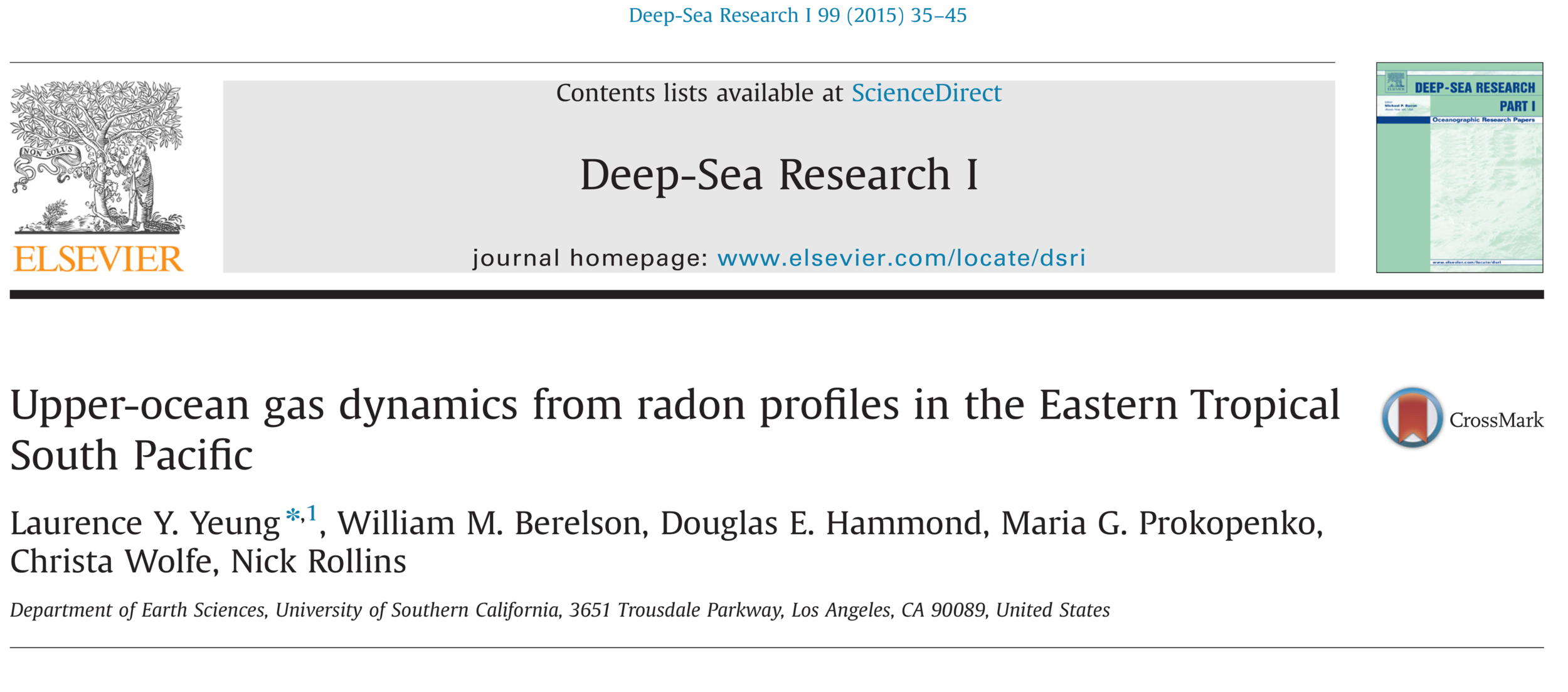Carbon. Oxygen. Nitrogen. Most of us know what these are: they are essential for life. The ocean and atmosphere are constantly trading these nutrients, often as dissolved and free gases. But, it's very difficult -- still, after many years of research -- to estimate how much carbon, oxygen, and nitrogen go into and out of the surface ocean.
Last week, some collaborators and I published a new twist on an old method, which constrains the behavior of gases in the surface ocean. Our approach is particularly sensitive to "non-steady-state" conditions when the ocean and atmosphere are out of balance. These conditions are the scourge of many an oceanographer as they force us to use more complicated and uncertain models to understand carbon, oxygen, and nitrogen cycling in the surface ocean, where the atmosphere meets the sea. Our method may offer a way forward for detecting and accounting for these pesky effects.
Here's the basic idea: Use two different methods to estimate the rate at which gas goes into and out of the upper ocean (i.e., the rate of gas exchange). When they disagree, you have a system that is out of balance. How exactly they disagree tells you something about what caused the imbalance.
Conductivity-temperature-depth (CTD) casts like the one above were critical for the study we just published. From NASA Earth Observatory.
In this is case, we compared wind-speed based estimates of gas exchange to estimates from a classic gas exchange measurement called the radon deficit, which relies on the CTD casts shown in the video above. The radon deficit method is quite sensitive to non-steady-state conditions, as it turns out, which made it unreliable as a way to estimate gas exchange rates. Yet, with the realization that gas exchange and wind speed were related by a simple formula, i.e.,
where u = wind speed, we can now turn the drawbacks of the radon deficit method into an asset: atmosphere-ocean imbalances will be manifest in the radon deficit.
In the Eastern Tropical South Pacific, we found that our study sites were generally well behaved. In six of seven cases, the wind-speed formula and the radon deficit method agreed. There was one case, however, where the radon deficit gave us a gas exchange rate about 1/3 what the wind gave us. It corresponded with what looked like an internal wave, a lateral flow of water caused by a large-scale physical disturbance far away. We got a sense of how much outside water mixed into our patch of ocean (about 15 meters worth) by looking at the size of the wind-to-radon deficit disagreement.
I'm not sure how widely people are going to use this approach, but I think it's a neat and potentially powerful idea. If anything, it gives us permission to re-evaluate the utility of old methods to see what they could tell us today. What's old is new again, right?
Read the full paper here (subscription or institutional access required).
